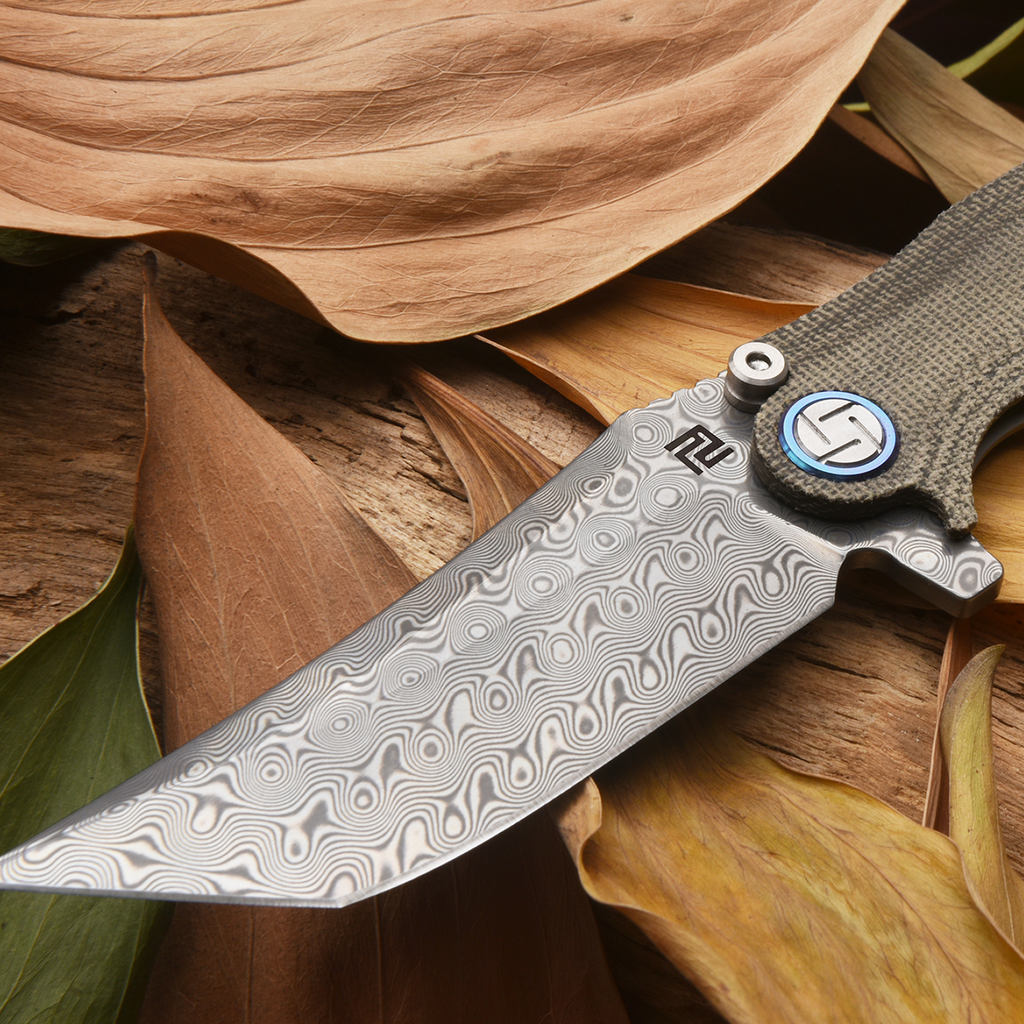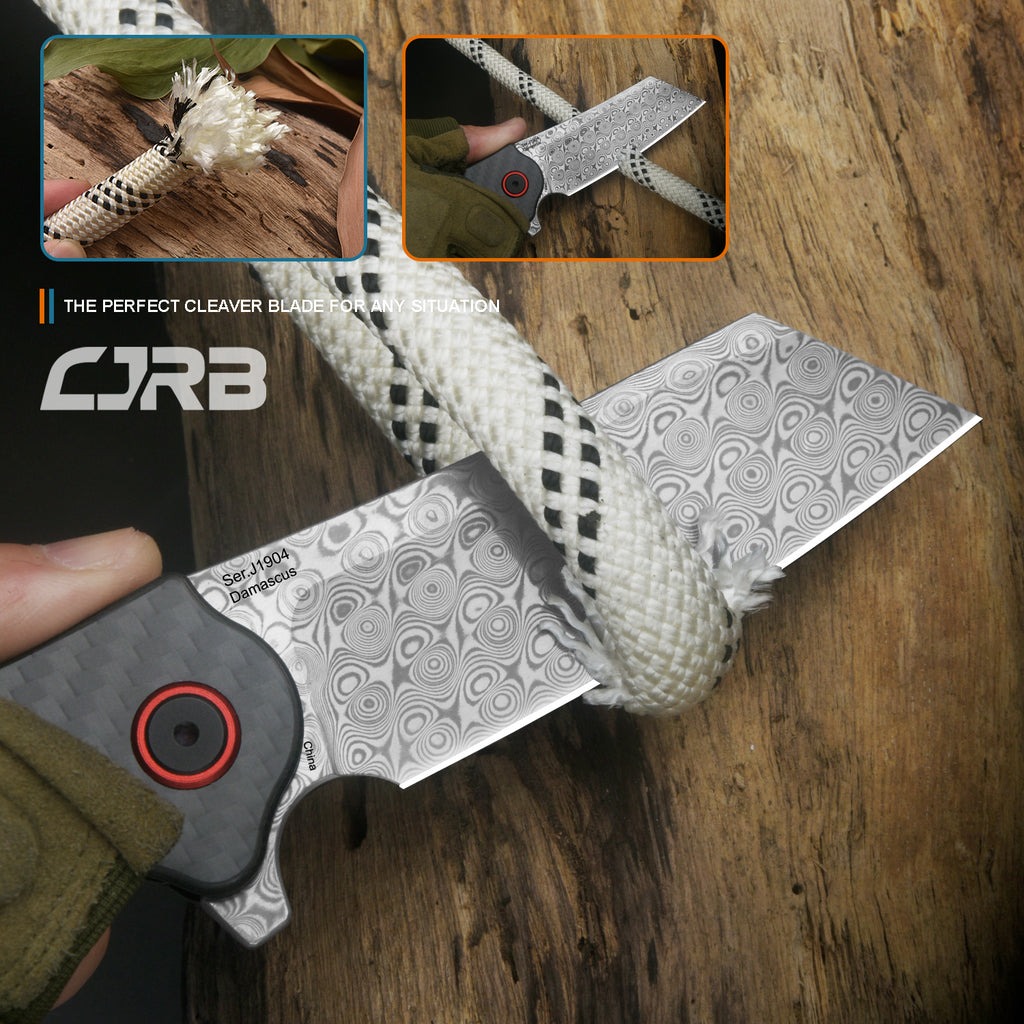What Is a Damascus Blade?
Damascus blades refer to knives that have visible wavy patterns on the steel, resembling flowing water. The unique patterns come from layering different steels and metals during forging and etching to reveal the internal layers. While often associated with Damascus, Syria, where some of the original Damascus swords originated over 2,000 years ago, today's Damascus blades are produced around the world.
The layered metals create a blade that is both beautiful and functional. The softer, more malleable steels provide flexibility and durability, while the harder steels hold a sharp edge. When combined skillfully through forging and welding, Damascus blades achieve exceptional toughness and edge retention compared to other knives.

Is Damascus Knife Worth It?
For professional chefs or cooking enthusiasts using knives daily, Damascus blades offer advantages that can make them worthwhile investments:
-
Superb Edge Retention: The layered metals hold sharp edges extremely well, so Damascus knives require less frequent sharpening. This saves effort over time.
-
Enhanced Durability: Damascus blades tend to be more durable and resistant to chipping or breaking than standard knives. With proper care, they can last for years of constant use.
-
Unique Aesthetics: The flowing, handmade patterns make each Damascus blade one-of-a-kind. Their beauty can make food preparation more enjoyable.
However, for light or occasional kitchen use, standard stainless steel knives may suit most needs at a lower cost. The choice ultimately depends on budget, usage level, and personal appreciation of quality craftsmanship.
What Is a Damascus Knife Used For?
Thanks to their well-balanced qualities of hardness, toughness, and edge retention, Damascus knives work wonderfully for a wide variety of kitchen cutting, slicing, and chopping tasks, including:
-
Chopping Vegetables and Fruits: The thin, razor-sharp edge slices smoothly through produce with precision.
-
Carving and Slicing Meats: Damascus blades easily portion meats in clean cuts without tearing or damaging the texture.
-
Fish and Sashimi Prep: For raw seafood, the seamless cuts help maintain optimal freshness and presentation.
-
Herbs and Garlic: The thinness reduces sticking and bruising that crush flavor compounds.

How Much Does a Damascus Knife Cost?
Entry-level Damascus knives can be found for as little as $50 to $100, offering a balance between quality and affordability for casual users. Mid-range options, typically favored by culinary professionals, may range from $200 to $500, reflecting their superior material quality and craftsmanship. At the high end, custom-made Damascus knives by renowned smiths can command prices of $1,000 and above, reflecting the artistry and time invested in each piece.
Final Words
Damascus knives offer impressive longevity, performance, aesthetics, and heritage for those enamored by excellent-bladed tools. While certainly an investment, their beauty and functionality justify the higher cost for passionate cooking enthusiasts and professionals alike. Yet quality Damascus blades also introduce novice cooks to a world of distinction in the kitchen. Either way, properly caring for Damascus knife rewards the owner for decades to come.
Q&As about Damascus Knife
Q1: Can Damascus knives rust, and how can I prevent it?
A: Yes, Damascus knives can rust if not properly cared for, especially those made with high-carbon steel, which is prone to oxidation. To prevent rust, keep your knife dry and clean; wipe it down after each use. Applying a light coat of food-safe mineral oil can also protect the blade. Store it in a dry place to minimize exposure to moisture.
Q2: Are all Damascus knives made the same way?
A: No, not all Damascus knives are created equal. The traditional technique involves forging together multiple layers of steel to create distinctive patterns. However, modern methods can include laser etching or pattern welding to achieve similar aesthetics. The quality, pattern, and performance of Damascus knives can vary significantly depending on the materials used and the skill of the craftsman.
Q3: How often should I sharpen my Damascus knife?
A: Generally, a Damascus knife may need sharpening every few months with regular use. However, to maintain the best edge, use a honing rod weekly or bi-weekly to realign the edge. For sharpening, it's recommended to use a whetstone or seek professional sharpening to preserve the integrity of the blade's edge and pattern.
Q4: Can I use a dishwasher to clean my Damascus knife?
A: It is strongly advised against using a dishwasher to clean a Damascus knife. The harsh chemicals in dishwasher detergents can damage the steel, and the high heat and moisture can lead to rusting. Additionally, the agitation can dull the blade. Hand wash your Damascus knife with mild soap and water, then immediately dry it thoroughly to maintain its condition.
Q5: Is there a difference between Japanese and European Damascus knives?
A: Yes, there are differences between Japanese and European Damascus knives, primarily in the design, blade geometry, and the steel used. Japanese Damascus knives often use harder steel, resulting in sharper edges and longer edge retention, but require more care to prevent chipping. European Damascus knives might use slightly softer steel, offering more durability and flexibility, but may need more frequent sharpening. The choice between the two often comes down to personal preference and the intended use of the knife.
Q6: How do I choose the right Damascus knife for my needs?
A: Choosing the right Damascus knife involves considering the tasks you'll use it for most. For versatile kitchen use, a chef's knife with a length of 8 to 10 inches is ideal. If you specialize in preparing meats, a Damascus boning or slicing knife might be best. Consider the weight and balance of the knife as well; it should feel comfortable and controlled in your hand. Researching brands, reading reviews, and, if possible, handling the knife before purchasing can help ensure you select the best knife for your culinary needs.
